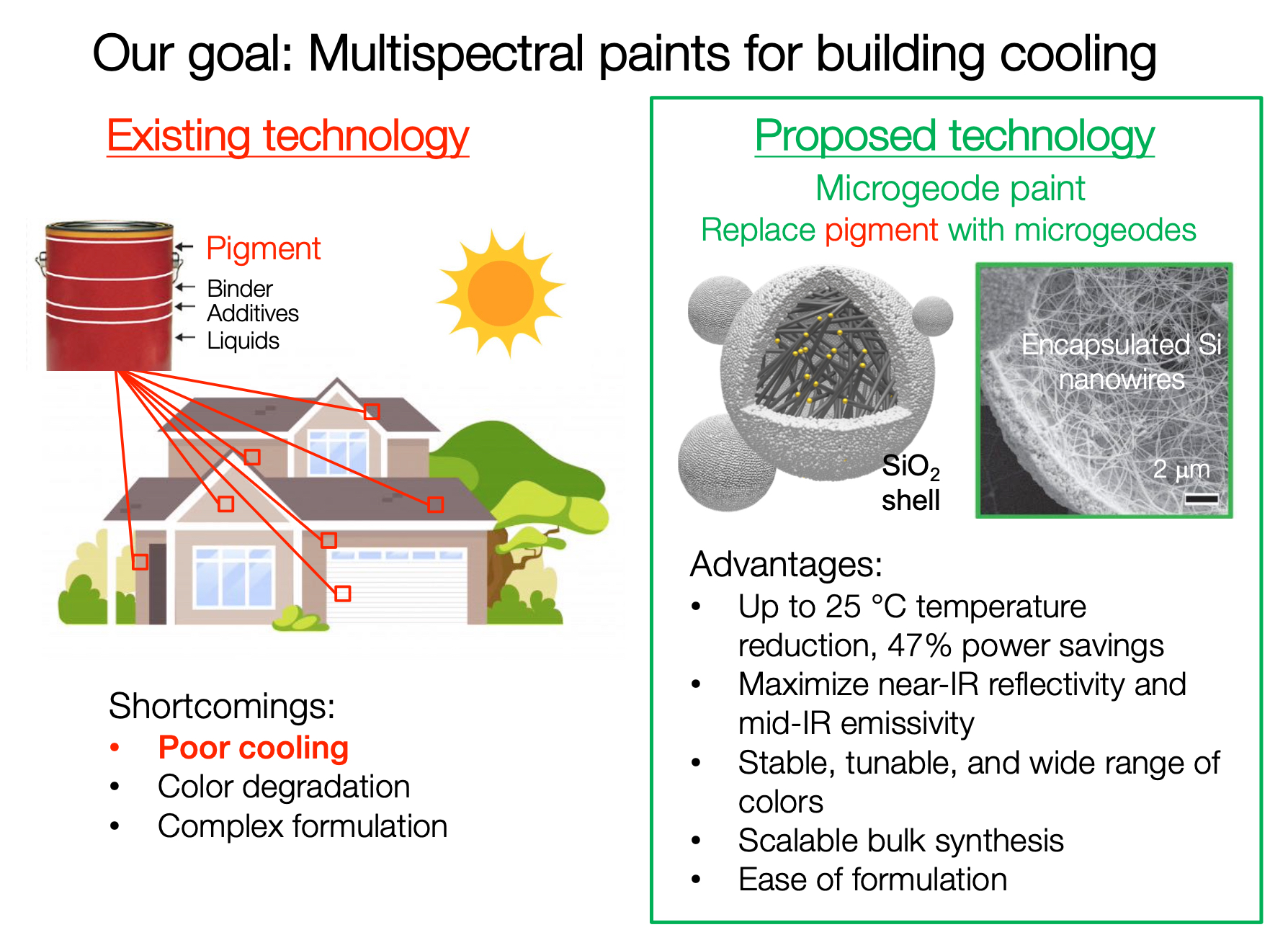Manufacturing functional materials for energy harvesting, thermal management, and coatings depends on the resolution of a longstanding issue with designing optical materials: how to engineer a response over multiple spectral bands. Materials for radiative cooling, for example, must strongly scatter visible wavelengths while strongly absorbing mid-infrared (mid-IR) radiation, and ultraviolet (UV) protective coatings must absorb or reflect UV light while remaining transparent in the visible wavelengths. To engineer a response in multiple bands, components that have optical resonances in different spectral regions must be combined; however, this process is typically application-specific and time-consuming.
Microgeodes offer programmable optical response with expansive applications
Nanowire geode-based materials—hollow silica microcapsules containing semiconductor nanowires—provide a scalable solution with expansive applications. The nanoscale programmable structure of the nanowires allows their optical response to be engineered precisely over multiple spectral bands, from UV through mid-IR. The nanowires are grown in and encapsulated by colloidal silica microcapsules to form “microgeodes” that enable bulk and scalable synthesis while protecting the nanowires and ensuring they remain inside. By combining the optical properties of nanowires with the processability of conventional colloidal particles, the microgeodes provide a versatile photonic materials platform for a range of applications, including radiative cooling, UV protection, and spectrally tuned/tunable camouflage.
- Programmable: The hierarchical structure of the microgeodes allows their optical response to be controlled precisely over multiple spectral bands, from UV through mid-IR.
- Scalable: Microgeodes offer an unprecedented combination of optical programmability and ease of fabrication. Given a target optical response, it is possible to specify a material structure that has the desired response.
- Versatile photonic platform: Microgeodes combine the tunability and versatility of nanowires (i.e., unparalleled control over the frequencies and widths of resonances) with the processability of microspheres (i.e., can be incorporated into flow processes and are easily stabilized).
- Secure microgeode structure: The colloidal silica microcapsules automatically protect the nanowires forming inside them, ensuring they remain in place.
- Cost savings: Microgeode paint could reduce building surface temperature by as much as 25°C, offering the potential for significant consumer savings.
- Cooling paint/coating for building exteriors with aesthetically pleasing colors
- Exterior coatings of space vehicles for heat management
- Broad spectrum camouflage
- Radiatively cooled rooftop coatings

Multispectral paints for building cooling

Overview of geode-based materials platform.
